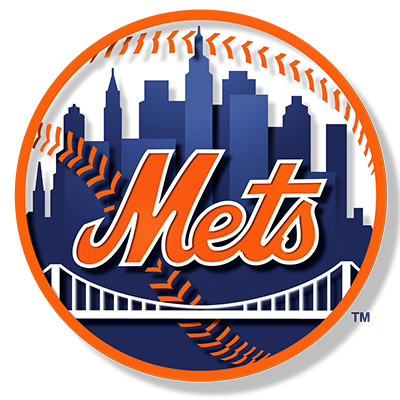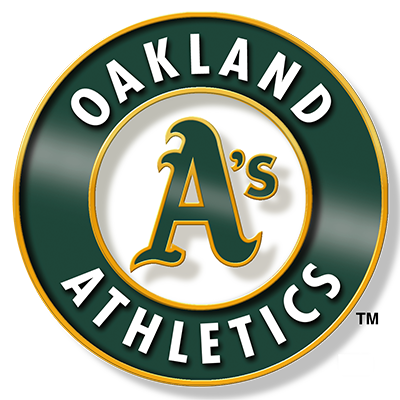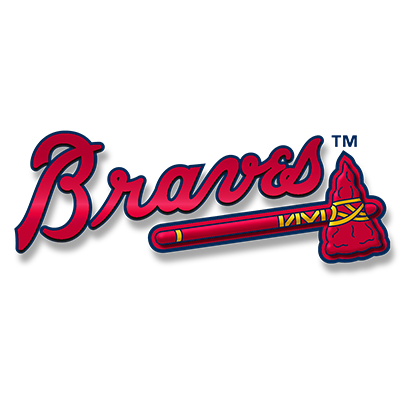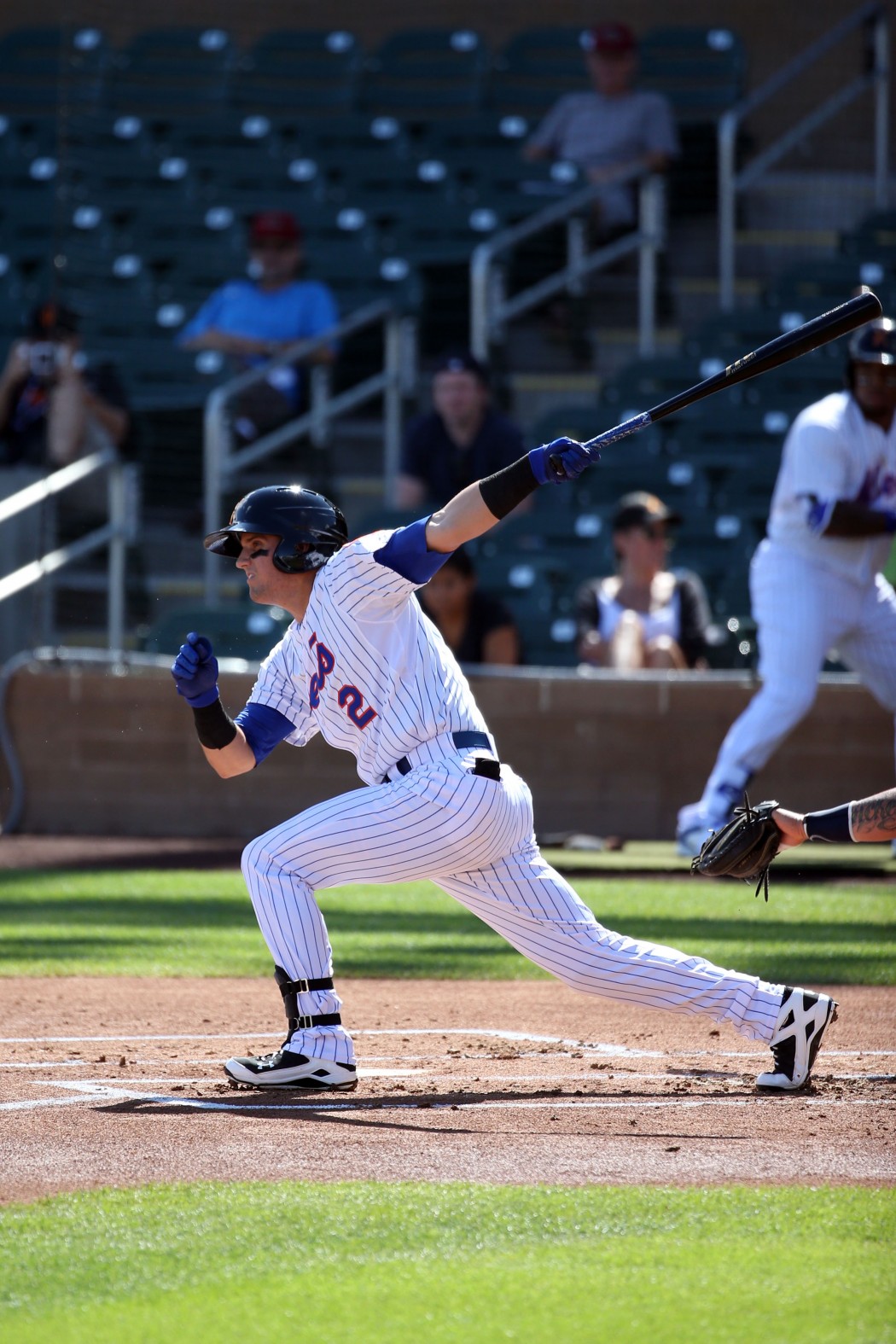Feature Photo: Gavin Cecchini, SS, Mets
Dave DeFreitas provides an in-depth look at a couple of Braves farmhands that might not yet be on your radar, while Nick J. Faleris provides updates on two standout Mets prospects enjoying strong 2016 campaigns and an Athletics’ infielder who is beginning to live up to the lofty expectations set when he entered the system as the center piece of the Josh Donaldson trade two winters ago.
As always, our Report Library and Video Library have been updated with some of our recent looks!
Triple-A Prospect Spotlight
 Gavin Cecchini, SS, Mets (Triple-A Las Vegas, Pacific Coast League)
Gavin Cecchini, SS, Mets (Triple-A Las Vegas, Pacific Coast League)
Ht/Wt: 6’2” / 186 B/T: R/R Age: 22 yrs, 8m
After a mini breakout last season with Double-A Binghamton, former first rounder (2012) Gavin Cecchini has continued to impress at the plate in 2016 over 460 PAs with Triple-A Las Vegas. In the midst of an already loud offensive campaign, Cecchini has been an absolute force over his past two series (comprising 36 PAs), slashing .441/.457/.647 and raising his slash line for the season to .325/.388/.449. Cecchini has nearly as many walks (43) as strikeouts (52) over his 109 games this year – his second straight season flirting with a 1:1 BB:SO ratio in the upper minors – and continues to draw praise for his overall approach at the plate and general feel for contact. He handles hard and soft stuff alike with an ability to track from same- and oppo-side arms alike, making him a decent bet to maintain solid contact rates despite a jump to big league competition.
While there’s little question Cecchini will continue to find ways to put barrel to ball once taking his cuts in Queens, there is a risk there isn’t enough present juice in the bat to keep major league arms honest. There will be pressure on the infielder to show an ability to drive the ball to the gaps in order to force opposition arms to work the margins more frequently, where Cecchini will be able to utilize his strike zone command to continue to draw free passes and add on-base value. If his on-base-to-average delta dips too greatly from the 60 or so points where it’s generally sat the last two seasons he likely becomes a pure down-order bat with a utility profile.
Defensively, Cecchini is capable at short but unlikely to be an impact defender there. He has the arm strength and his hands work well enough to allow for some versatility across the dirt and an increase his value as a potential utility option. While the profile doesn’t scream superstar, Cecchini should be a useful piece for the Mets in short order. If he can tease enough gap pop or on-base utility to go with a solid-average defensive profile, you could be looking at a quality everyday contributor. – Nick J. Faleris
Double-A Prospect Spotlights
 Franklin Barreto, SS/2B, Athletics (Double-A Midland, Texas League)
Franklin Barreto, SS/2B, Athletics (Double-A Midland, Texas League)
Ht/Wt: 5’10” / 190 B/T: R/R Age: 20 yrs, 6m
Barreto struggled some to get his footing as a twenty-year-old tackling a compact and competitive Texas League, slashing just .228/.282/.335 through June 1st of this year. Since then, however, the precocious batsman has torn his way through Double-A competition, slashing .320/.384/.473 thanks to impactful cuts charged by quick twitch actions and very fast hands. Barreto squares balls up with detonative result, showing more pop than you’d expect from a sub-six-foot middle infielder, hinting at 15-plus home run power at maturity with plenty of doubles to pad to total power output. He can get unhinged in his swing at times, but has generally cut down on empty swings as he’s progressed up the ladder, with this last three-month span showing around a 20% decrease in his strikeout rate off of previous production.
Defensively, Barreto has improved his work up the middle in 2016, showing slightly steadier hands and footwork at both shortstop and second, though he still struggles some to finish on plays to the margins of his solid range. There’s plenty of arm strength for the future Athletic to find a home at third base should he need to shift off of shortstop for good, and he is already proving capable at the keystone where his arm allows for ease of execution on turns and from multiple angles across his fielding zone.
Barreto looks poised to make the jump to Triple-A in 2017, and he could be ready to contribute with the stick in Oakland as early as this September if the A’s want to reward his productive summer with a cup of coffee in NorCal once the Texas League playoffs are completed. He has the look of a solid offensive contributor who could blossom into an impressive two-hole stick with a little bit of pop to go with a plus hit tool. While not a burner, he runs well and makes use of good reads to extend bases and swipe bags when the opportunity presents itself. He may not provide MVP-caliber seasons, but the primary return in the Josh Donaldson (3B, Blue Jays) trade some twenty months ago should provide a good bat and capable glove at minimal cost, all while likely debuting in Oakland before he turns 22. – Nick J. Faleris
 Dominic Smith, 1B, Mets (Double-A Binghamton, Eastern League)
Dominic Smith, 1B, Mets (Double-A Binghamton, Eastern League)
Ht/Wt: 6’0” / 250 B/T: L/L Age: 21 yrs, 2m
August has been very kind to the 11th overall selection from the 2013 MLB Draft, with Smith slashing .398/.481/.580 over 24 contests and 88 PAs this month, continuing an upward trend in both power and on-base production that has spanned the entirety of his pro development. Through two series this past week Smith knocked around the Hartford and Bowie staffs to the tune of a .476/.538/.762 slash line over 26 PAs, including three doubles and a home run to go with four walks against just one strikeout.
Smith covers the plate well and shows an ability to use the whole field thanks to a fluid and balanced swing that plays across the quadrants. He continues to show solid strike zone awareness and pitch ID skills, helping the lefty effectively work the count for pitches to drive – something he has excelled at particularly as of late.
While Smith’s power production has been a frequent target of skepticism amongst stat-line prognosticators, the SoCal native has flaunted plus raw power dating bat to his impressive display in the Metrodome during the 2012 Perfect Game National Showcase workouts. After focused development on refining his approach at the pro ranks, Smith is now seeing that raw power manifest with more frequency in-game, to the point he projects as a 20-plus home run bat at maturity.
While the profile skews heavy to his offensive game thanks to well below-average foot speed, Smith is an elite picker at first and above-average defender overall. He’s a first-division regular in the making, and he could eventually emerge as an impact talent if he is able to fully tap into his raw power in-game. – Nick J. Faleris
Class A Prospect Spotlight
 Jared James, OF, Braves (Class A Rome, South Atlantic League)
Jared James, OF, Braves (Class A Rome, South Atlantic League)
Ht/Wt: 6’1” / 185 B/T: L/R Age: 22 yrs, 6m
The son of former big leaguer Dion James, Jared has already begun to reward the Braves for the flier they took on him in the 34th round of this year’s MLB First-Year Player Draft. James was promoted to Rome earlier this month after aptly handling Appy League pitching to the tune of a .298 average with five doubles and one homerun across 121 at bats. In his 65 at-bats since, he has already hit two bombs and three doubles to go with the .292 average against South Atlantic League arms. Given the small sample size and pedestrian pedigree as a 34th-round selection, it would be easy to dismiss the hot start as luck. While that may be part of things, it is far from the whole story here.
James is a lanky 6’1” with long arms and legs that make him appear a little taller than he’s listed. He is not real thick, but has some present wiry strength with room to add more as the body matures. He has a level swing with some hand speed and does a very good job keeping the barrel in the zone for an extended period. In my first look at him, he showed a bit of a slap hitter’s approach at the plate, looking to serve balls to left field and punch balls up the middle, with little in the way of raw power on display during batting practice. Over the next couple games, however, James not only showed a solid approach and feel for the strike zone, but an ability to really get the head out and turn on velocity with authority when challenged inside.
In those looks he was aggressive early on in counts against hittable fastballs. He didn’t expand or zone and avoided falling behind early, generally putting together some solid at bats. While he can at times get aggressive in the zone, he has some feel for an approach and isn’t just taking advantage of early cookies – some of which is evident by his solid strikeout to walk rates across both his Rookie League and Class A at-bats.
There’s still a fair amount of work to be done before James starts rocketing up the prospect ranks. Despite an already athletic build, he really needs to get stronger and has room to do so. Were he a high school sign it would obviously be easier to dream on him, but at 22 years of age the development potential may not be quite the same. On the bright side, the actions are clean and he shows good hand-eye coordination and athleticism, and given the present body and frame he may just be a bit of a late bloomer physically.
He gets some carry to the gaps in BP and should hit a few more doubles going forward, but I don’t see him being an impactful home run guy. He runs okay – 4.30 HP-to-1B – but is better underway as his strides lengthen out, and he is an aggressive base runner constantly looking to take the extra base. An average defender in left field, he lacks the speed you’d want for a full-time center fielder, and based on the limited power projection he could end up as a bit of a tweener. He could benefit from continued work during instructional league this fall, and if he performs well there will definitely be a name to watch going into the 2017 season. Check out my full report on James here. – Dave DeFreitas
Rookie League Prospect Spotlight
 Brett Cumberland, C, Braves (Rookie Danville, Appalachian League)
Brett Cumberland, C, Braves (Rookie Danville, Appalachian League)
Ht/Wt: 5’11” / 205 B/T: S/R Age: 21 yrs, 2m
When the Braves drafted Cumberland this past June with their Competitive Balance Round B pick, they likely saw a strong-bodied kid with some raw power who had enough to work with defensively to become an offensive minded backstop at the major league level. The Cal product has a relatively boxy frame with slightly rolled shoulders and a thick lower half. He sits in an easy medium crouch at the plate with a pretty pronounced uphill plane to his swing. The actions are easy and he does indeed have some pop, but it plays more as loft power, getting carry on his fly balls rather than back-spinning line drives.
As a draft eligible sophomore at Cal, Cumberland hit .344 with 16 bombs and almost a 1:1 SO:BB ratio, so he has a track record of plate discipline for his age at a fairly high collegiate level. Through his first 189 PAs in pro ball (all coming at Rookie-level Danville) the power has carried over, but he has struggled to maintain the same level of command of the strike zone that he displayed at Cal, striking out in just over 25% of his PAs. This is not uncommon for first year pro hitters, though it is also not encouraging to see a collegian with a track record struggle during even a brief taste of Rookie ball. The best-case scenario is Cumberland is simply a bit fatigued after a long season that started in earnest for him this February.
Cumberland is a strong kid with pretty smooth actions across the board. He still has some room to fill out and get stronger, and while there are some mechanical issues with the stroke, he seems athletic enough to have a chance to make adjustments. That said, he does have significant uphill plane to the swing and does not have tremendous bat speed from either side of the plate. He does a good job with the ball down and can hammer a mistake in the middle of the plate, however he tends to hook anything out away from him, which creates a lot of rollover outs to the right side or easy fly balls to left field.
The profile suggests Cumberland could eventually fall into the three-true-outcomes category (home runs, walks and strikeouts). While he has not put up great walk rates thus far in his brief pro debut, Cumberland does give you a professional at-bat and will see a solid amount of pitches. He’s not overly passive and will attack the balls that are in his wheelhouse, but he has the makings of a grooved swing and could end up having some trouble as he starts to face guys with better command.
Defensively, he leaves a bit to be desired at present, and he has a number of areas to smooth out over the course of his development. He sets a high target and is slow to shift his weight on anything to either side, and while he has some accuracy with his throws, the arm strength is below average and he is a bit slow to get rid of the ball (popping 2.20 and 2.16 in my looks). I don’t think it is a stretch to see the footwork get better with work and the receiving should stand to improve a bit as well with the pro instruction.
Given the over-slot bonus the Braves dropped on Cumberland with the 76th-overall pick, it would appear they are confident as to their ability to groom him behind the plate while teasing out as much as possible on the offensive side. Time will tell whether there is enough here to justify the investment. Right now, it looks like he will continue to run into a few and could chip in with some on-base production as he advances, but a lot of that value likely goes away if he can’t give the club those at-bats from the catcher spot. Have a look at my full report here. – Dave DeFreitas


